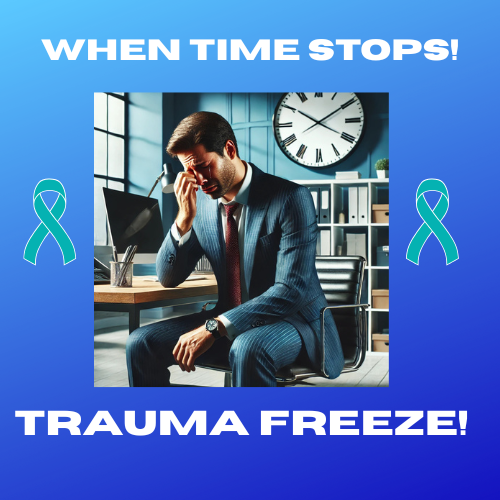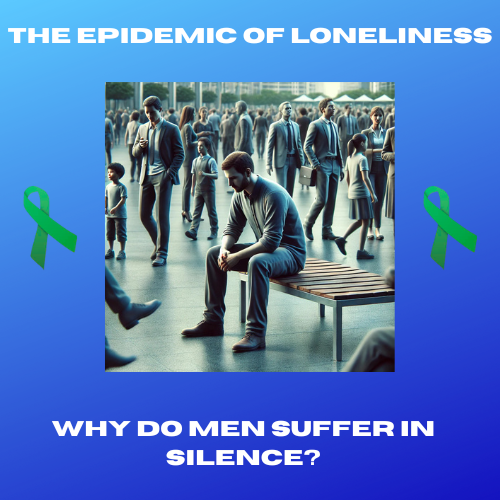The Power of the Cadence
The Power of the Cadence:
The same rhythm that broke you down can build you back up.
I meet with a 32-year-old Marine veteran who sits in silence, shoulders rigid, eyes fixed on the floor. Three years have passed since his discharge, yet every morning he still wakes at 0500, his body responding to an invisible reveille.
The cadences that once unified his unit now echo as haunting reminders of a brotherhood he's lost, a purpose that feels severed. "Left, left, left-right-left" plays on repeat in his mind, not as a source of strength, but as a cruel soundtrack to his isolation.
But what if I told you that this very rhythm, these seemingly simple chants that shaped his military identity, could become the key to unlocking his healing?
When Language Becomes Identity
The transformation begins the moment you step off the bus at basic training. The alphabet you once knew, A, B, C, D, becomes Alpha, Bravo, Charlie, Delta.
Time itself changes; "six o'clock" disappears, replaced by the precise "zero six hundred."
This isn't just about military efficiency; it's about neurological rewiring. Every repeated phonetic call, every synchronized "Hoo-ah!" creates new neural pathways, literally reshaping how your brain processes identity and belonging. The cadences become more than just marching songs.
When hundreds of voices unite in "I don't know, but I've been told military life is good as gold," something profound happens in the brain. Research on rhythmic group activities reveals that this synchronized chanting triggers a cascade of neurochemical reactions.
Oxytocin, the bonding hormone, floods your system. Your amygdala, typically scanning for threats, learns to associate rhythm and unity with safety and strength.
This is neurological programming at its most sophisticated. The repetitive patterns create what scientists call "neural entrainment," where individual brainwaves literally synchronize with the group rhythm. Your sense of self becomes inseparably woven into the collective identity.
The Silent Battlefield
But what happens when that rhythm stops?
For many veterans, the transition to civilian life isn't just a career change; it's a profound identity crisis. The structured world of Alpha, Bravo, and Charlie vanishes overnight. The cadences that once provided strength now echo as reminders of loss.
The same neural pathways that were programmed for unity and purpose suddenly fire in an environment where that unity no longer exists.
This is where trauma takes root, not just from combat experiences, but from the profound disruption of identity itself. The amygdala, once soothed by familiar rhythms, becomes hypervigilant in the chaos of civilian unpredictability. The prefrontal cortex, strengthened by military structure, struggles to navigate a world without clear ranks and orders.
A client once described it to me this way: "I felt like I was speaking a foreign language in my own country. Everything that made sense, the timing, the language, the brotherhood, was gone. I kept waiting for someone to call cadence, to tell me which foot to put forward next."
The Neurological Path to Healing
Here's the revolutionary insight that changed everything in my practice: the same neurological programming that created military identity can be deliberately redirected to heal trauma responses.
I developed what I call the six-step Cadence-Based Integration method after witnessing remarkable breakthroughs with veterans who had struggled with traditional talk therapy approaches. The science is precise; rhythmic activities literally rewire the brain, creating new neural pathways while strengthening existing ones.
Step 1: Respiratory Synchronization: We begin each session with breathing exercises set to familiar cadence rhythms. This immediately activates the parasympathetic nervous system, your body's natural healing response. The familiar pattern signals safety to the hypervigilant amygdala while strengthening vagal tone for better emotional regulation.
Step 2: Somatic Reclamation Standing: we incorporate gentle bilateral movement, left-right, left-right, activating both brain hemispheres. This isn't about returning to military bearing; it's about reclaiming the neurological benefits of synchronized movement in a therapeutic context.
Step 3: Cognitive Reframing: We modify traditional cadences to reinforce current life goals. Instead of "I don't know, but I've been told," we create personalized versions: "I don't know, but now I see civilian life can strengthen me." The familiar rhythm carries new messages directly into the subconscious mind.
Step 4: Identity Integration: Rather than viewing military experience as something to overcome, we use it as a foundation for civilian success. The discipline that served in combat serves in recovery. The loyalty shown to unit members transfers to family relationships. The courage displayed under fire applies to facing civilian challenges.
Step 5: Community Reconnection Group sessions, where veterans share modified cadences and create new bonds while honoring old ones. When multiple voices unite in therapeutic rhythm, the oxytocin response rebuilds that crucial sense of belonging—not to a military unit, but to a community of survivors and thrivers.
Step 6: Daily Practice Integration: Morning routines incorporating cadence rhythms become neural maintenance tools. The same patterns that once prepared warriors for battle now prepare them for success in civilian life. The rhythm that once declared "you belong to us" now affirms "you belong to yourself."
The Warrior's New Mission
Six months into treatment using this approach, one veteran made a profound observation:
"I'm not trying to become a civilian version of myself anymore. I'm learning to be the same warrior on a different mission. The cadence reminds me who I really am underneath all this pain."
The transformation was remarkable. Sleep patterns are regulated. Hypervigilance decreased. Most significantly, he began carrying himself with the same confidence I imagined he'd possessed in uniform but now applied to civilian challenges.
He started leading support groups, using modified cadences as therapeutic tools.
"These guys need to remember who they are," he explained. "We're not broken soldiers trying to become civilians. We're warriors on a new assignment."
The Science of Healing Rhythms
The research validates what soldiers have known intuitively for centuries. Studies show that veterans who maintain a connection to positive military experiences, including traditions like cadences, demonstrate significantly better long-term mental health outcomes than those who completely disconnect from their service identity.
The rhythmic patterns strengthen neural networks associated with emotional regulation, executive function, and social bonding.
Groundbreaking work on trauma confirms this: healing happens when we reclaim the parts of ourselves that trauma tried to steal.
For military veterans, cadences represent the core of their forged identity, discipline, unity, strength, and purpose. Therapeutic approaches that honor and integrate these qualities, rather than pathologizing them, create lasting neurological change.
Reclaiming Your Rhythm
The amygdala, which was once associated with cadence and invincibility, can learn the same association in civilian contexts. The hippocampus can reprocess military memories as sources of strength rather than loss. The prefrontal cortex, enhanced by years of structured thinking, can apply those same skills to navigate civilian complexity.
One veteran described the breakthrough moment: "When I realized I could use the same mental tools that got me through deployment to get through my divorce, everything changed. The cadence wasn't a reminder of what I'd lost; it was proof of what I still carried inside."
This isn't about living in the past or refusing to adapt to civilian life. It's about recognizing that the neurological strength forged through military experience remains available. The rhythm that once synchronized your steps with your brothers and sisters in arms can now synchronize your healing with your most authentic, strongest self.
A Call to Healing
Your cadences aren't relics gathering dust in memory. They're prescriptions for your future, encoded in rhythm and rhyme. The same voice that once called out across training grounds can call you home to yourself, stronger, more integrated, and more purposeful than ever before, like an affirmation.
The transformation doesn't require you to abandon your military identity. It asks you to translate it. The same discipline that carried you through impossible situations can take you through recovery. The same brotherhood that sustained you in service can be rebuilt in the civilian community.
The rhythm is still there, waiting. Your brain remembers every beat, every unified breath, every moment when you felt truly part of something greater than yourself. That memory isn't a wound; it's a blueprint for healing.
Left, left, left-right-left. But this time, each step takes you closer to home, to yourself, to peace, to the warrior you always were, now serving on the most important mission of your life: your own healing.
Hoo-ah.
©2025 www.soundthetrumpet.org









